Do you want to take your company’s advertising to the next level? 3D product renderings can help you. These hyper-realistic, computer-generated images can be used to enhance and diversify the visual appeal of many different marketing campaigns, from website content to printed catalogs.
This post will discuss the basics of 3D rendering, cover the top five ways in which it can be effectively utilized to increase furniture sales, and explore the technical details of some common 3D furniture rendering techniques.
What Is 3D Rendering, and What Are Its Advantages?
3D rendering is a term that describes a particular method of 3D modeling design. All versions of 3D modeling involve the creation of a digital image, usually from a photo, a prototype, or another form of design specification.
3D rendering, however, is unique because the images generated are typically indistinguishable from photographs.
These incredibly realistic images contain material textures, small details, a carefully constructed lighting scheme, and even minuscule irregularities on surfaces that contribute to the images’ lifelike appearance. Without these small imperfections, 3D product renderings may look overly airbrushed or computerized.
3D visualization places a product in a setting that plays to its strengths, emphasizes the quality of the materials used to construct it, and captures the viewer’s imagination. Images like this are useful for a wide range of marketing applications, from online and print catalogs to ad campaigns and permanent web content.
While many types of businesses make use of 3D product design, they are particularly widely used in the furniture industry. In fact, these images are becoming more popular among furniture retailers every year.
3D rendering has several advantages over traditional studio photography. It is essential for furniture companies to create high-quality visuals for marketing
At the same time, though, it is in the company’s best interest to optimize the time and money spent generating images for marketing purposes. This becomes especially important for businesses that produce monthly or semi-annual catalogs that include a high volume of product images.
Choosing 3D rendering over studio photography can save businesses money by reducing the need for single-use props, settings, and decorations. Fewer prototypes need to be built, and studio space is not required. Image quality is often better since the lighting is highly controlled and undesirable elements can be quickly edited.
In addition to that, the resulting images can be easily changed to reflect seasonal marketing campaigns, incorporate new items into existing product lines, or provide shoppers with customizable options.
Still not convinced? Check out the famous Swedish furniture brand IKEA’s online catalog. This catalog is known for its impressive 3D interior rendering sets and professional-grade images.
Related: Why IKEA Uses 3D Renders vs. Photography for Their Furniture Catalog
Over 75% of these images are actually 3D product renderings, a decision that was made in 2005 in order to cut the enormous costs associated with building and photographing every item in the company’s extensive inventory.
IKEA employs an in-house team of designers to create computer-generated models for a majority of their pieces, which can be shown with simple white backgrounds or integrated into a stunning living room or bedroom display.
Using 3D Rendering in Furniture Retail
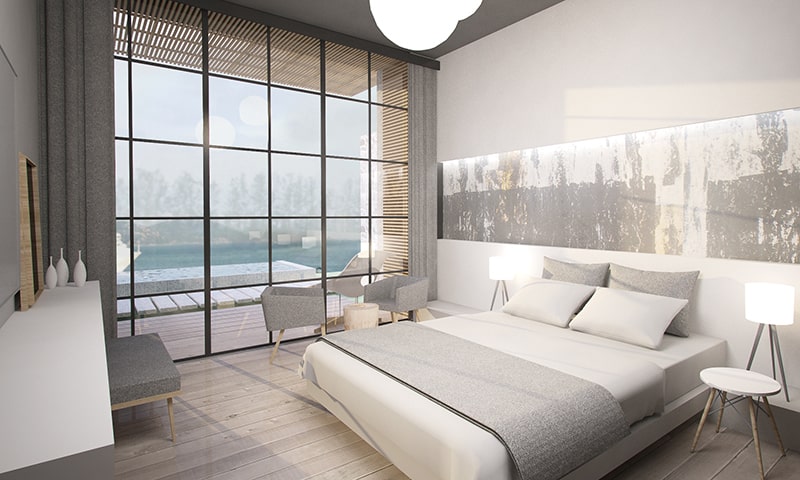
urniture retail companies can utilize 3D visualization in many different ways. As the IKEA team discovered, using product renderings to replace studio photographs in online and print catalogs is a particularly effective way to incorporate this technology into a marketing plan.
Furniture retail companies can utilize 3D visualization in many different ways. As the IKEA team discovered, using product renderings to replace studio photographs in online and print catalogs is a particularly effective way to incorporate this technology into a marketing plan.
E-commerce is an expanding
The potential hassle of attempting to return an item that appears different than expected or doesn’t fit into a room the way someone thought it would can be quite a deterrent to impulsive shopping, and customers are often conservative when it comes to choosing furniture from an online catalog.
To sell big-ticket items like desks, couches, and bed frames, furniture retailers must prove their product’s worth to a customer despite the fact that they cannot examine the physical piece in a showroom.
Would you buy a bed or a couch without sitting on it to see if it’s comfortable?
As a company seeking to target an online market, this is the problem you have to overcome: presentation of your merchandise has to be so effective that your customers feel like they’ve interacted with the item and are more than satisfied with its quality before seeing it in person.
To replicate this effect and avoid overwhelming buyers with too much information, websites should provide a similar structure by highlighting popular items on the home page or creating images of interior sets that include several complementary items.
This is where 3D rendering becomes advantageous to furniture retailers. At a relatively low cost, you can create detailed visuals of every product in your inventory and make those images available online for customers to peruse.
Top 5 Ways in Which 3D Product Rendering Can Help Your Sales
Manufacturers may find it challenging to showcase the benefits of their products online, but 3D visualization is a powerful marketing tool that can be used to highlight the qualities that set a product apart from its competitors. Here are five ways that 3D product renderings can be used in an online furniture catalog to increase sales.
1. 3D Product Renderings Can Show Off Product Details

What sets a product apart from similar items manufactured by other companies? It is often the small details of construction or an innovative patented design element.
In a traditional showroom, customers can examine the item firsthand, evaluate these details and design elements, and are more than likely to make a purchase provided the design lives up to advertised promises and expectations.
In an online catalog, however, the marketing team must be able to highlight these details in a way that convinces customers of product quality without being able to examine the item up close. Adding 3D product renderings to a catalog is the perfect method.
Since these images are photorealistic, customers can zoom in to the level of joints, seams, and nails and inspect the craftsmanship. 3D renderings can also show cut-away views that showcase components of the item’s inner construction.
Customers who are looking for an item that will last a long time will appreciate being able to see the way that item is built. This capability actually offers a distinct advantage over traditional furniture showrooms, where cut-out displays are expensive to create and are very rarely used.
It creates the same feeling of close examination, security, and belief in the product that leads to the closing of a sale in a physical shop. It also allows companies to promote the unique technologies used to design and build furniture with health benefits, such as mattresses for lower back support or ergonomic office chairs.
2. Companies Can “Sell Purpose” by Placing Items in Specific Settings
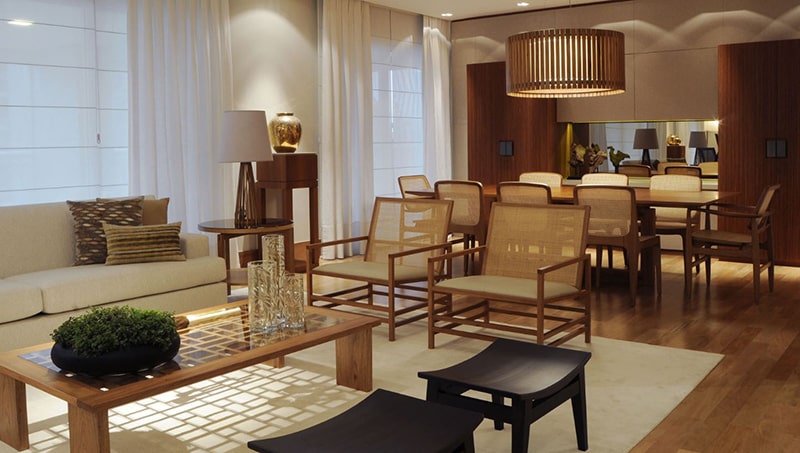
Sometimes the key to making a successful sale is “selling purpose” rather than promoting the product itself. Placing an item in a setting that makes it desirable or highlights its potential functionality can allow the customer to imagine using the item, which increases the likelihood of a purchase.
This is a particularly successful tactic in furniture retail. For example, showing an office desk and chair set in an impressive penthouse, a fine wooden table in an opulent, chandelier-adorned dining room, or a baby crib in a pastel-painted cozy room creates a specific atmosphere and prompts an emotional response in buyers.
Flattering backgrounds, often with a minimalist-inspired design, can also show off products to their best advantage. This approach works for appliance catalogs as well. Placing sinks, bathroom furnishings, and stovetops in a relevant setting can act as a testimony to their quality and utility.
3D product renderings can provide exactly this sort of elegant, imaginative scenery. Multiple pieces in a product line can be arranged in a single image, which is then finished with a detailed background that perfectly showcases the pieces.
Best of all, this can be done at a far lower cost than assembling a similar image in a studio. These renderings can also be easily edited to create images for seasonal sales. Once the computer models of all the pieces are created, the possibilities for placing them in different setups are nearly endless.
3. A Panoramic View Can Display All Angles of a Product
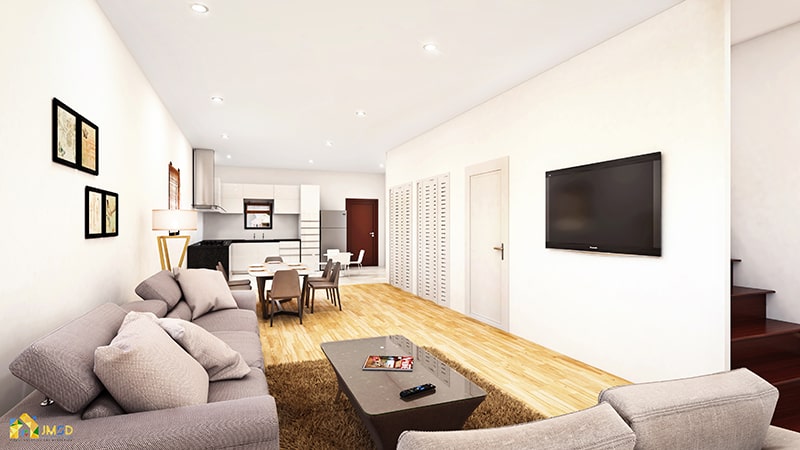
The term “3D rendering” doesn’t only include still photographs. This level of photorealism can be expanded to 3D animation services and interactive imagery as well.
A 360-degree view (see more on this below) offers another way for a customer to engage with the product. Similar to the first point above, this goes a long way towards building brand
Providing this kind of immersive view in an online catalog may actually be more effective than expanding or enhancing traditional showrooms. Online customers can browse from the comfort of home, on their own time, and without feeling rushed by sales assistants.
With stress and time constraints removed, they may be more likely to feel like they have satisfactorily evaluated the product and be more willing to purchase with confidence.
3D animations can be used in other ways as well.
Companies can showcase the versatility of modular furniture by creating an animation that shows different configurations in a variety of spaces. These types of interactive images are also much more user-friendly for those shopping via mobile devices.
Rather than just scrolling through an endless catalog of tiny pictures, mobile shoppers can interact with different pieces by rotating, zooming, and carefully examining a catalog of photorealistic product renderings.
Since 3D 360-degree panorama and other rendering techniques preserve detail even at close range, the use of 3D rendering in an online catalog can expand its functionality and create a better customer experience.
4. 3D Product Renderings Offer Opportunities for Customizable Design
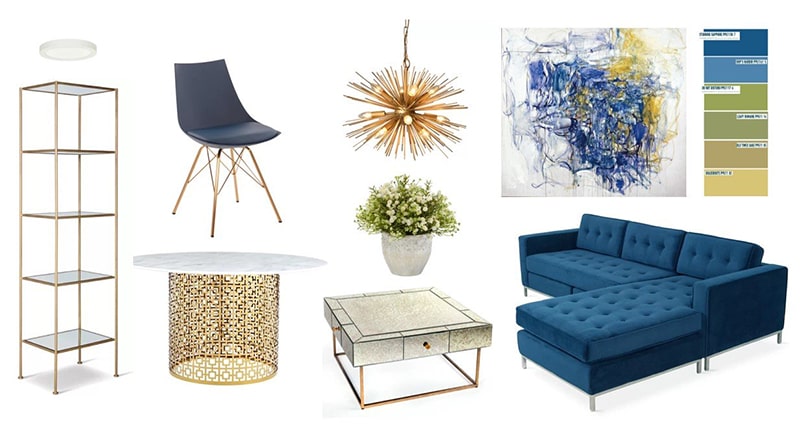
Modern online consumers not only want to shop from the comfort of their homes, but also desire an individualized shopping experience.
For a company, this means that offering a full catalog of customizable options, and providing a way to view these options online in real time, is essential for increasing sales.
The ability to choose different colors or styles and immediately view a high-quality image of the customized product is another capability of e-commerce that traditional showrooms cannot
With far fewer space restrictions on a website, companies have the opportunity to provide a comprehensive catalog and create an atmosphere where shoppers feel like they have the freedom to choose exactly what they want.
It is worth noting that adding such a large amount of information to a website must be done in a way that guides customers through the available options rather than simply presenting them with an overwhelming amount of information.
Filtering products based on some sort of criteria from an initial questionnaire or presenting products related to the one that a customer is currently viewing are just a few of the ways that websites can be structured to guide shoppers towards purchases that fit their preferences and expectations.
Over time, companies can monitor site traffic and trends (for example, which items are viewed most often, items that are frequently viewed but not purchased) and tailor custom options to consumer demand.
5. 3D Rendering Can Shorten the Time Frame for a Product Launch
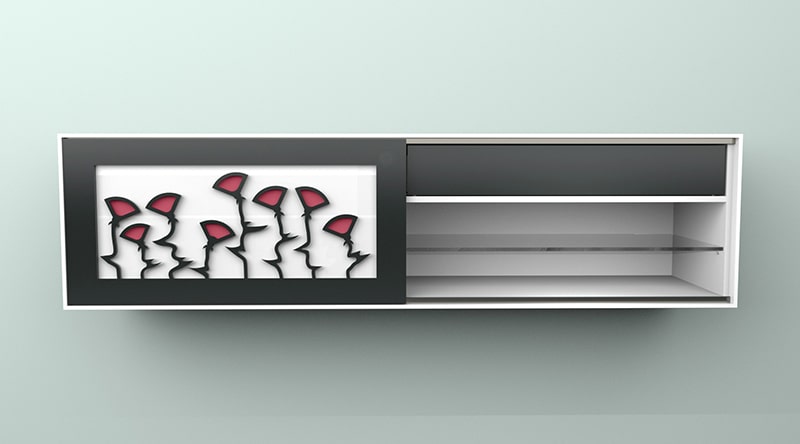
3D product renderings can be produced even before a prototype is finished. This lets marketing teams run promotional campaigns for new products before they are fully manufactured, which can be advantageous for several reasons.
3D product renderings can be produced even before a prototype is finished. This lets marketing teams begin to run promotional campaigns for new products before they are fully manufactured, which can be advantageous for several reasons.
First, it enables a company to gain an early advantage over competitors, especially if they are entering a new market or targeting a different demographic. Second, it allows a business to accurately gauge consumer demand, which can inform production and avoid unnecessary build-up of excess inventory.
Companies can then save money by allocating resources effectively. Most importantly, having realistic renderings of an upcoming product gives potential buyers concrete images to engage with rather than a generic “coming soon” piece of clip art or placeholder.
Kicking off a promotional campaign in the right way can really boost sales by generating demand from the moment the campaign is launched right up until the first batch of items is released.
This is yet another advantage of using 3D product renderings in an online catalog. Stores and showrooms can replicate a version of this process with a prototype, but it may not be as detailed or have exactly the same functionality as the final version of the product.
3D product visualization, however, is cost-effective up front and has the potential to create a significant return in sales by increasing customer exposure.
The Nuts and Bolts of 3D Rendering: Some Common Techniques and Methods

The terminology and technical details of different 3D rendering methods can be confusing at first. Below is a brief summary of some common methods of 3D visualization, which will help you decide which one is right for your business’s needs, along with a simplified step-by-step process for the creation of a 3D product rendering.
Step 1: Obtain Reference Images
Regardless of the method used, the first step in building a digital photorealistic image is to obtain a set of reference images. These images will give the programmer important information about the product’s dimensions, materials, and aesthetic.
Method 1: Photogrammetry and 3D Scanning
3D scanning does require a physical prototype, as well as a special piece of hardware for scanning the item. The product is first photographed from a variety of different angles. Then, the photographs are overlapped using specialized software to create a high-density “mesh” of triangles.
This digital configuration defines the shape and texture of the
Method 2: 3D Modeling Programs
3D modeling programs do not require a physical prototype, only a photograph, sketch or other design. The modeler starts with a digital blank space, much like an artist with an empty piece of paper, and creates a model from scratch.
The steps below are then used to build up a photorealistic image. Images created in 3D modeling programs can also be exported and used in animated visuals such as panoramas and augmented reality (AR) mobile apps. Some companies use AR in their mobile furniture catalogs to allow customers to test the fit of a product by creating a sample room layout and adding different objects to
Step 2: Set Proportions
After obtaining a set of reference photos from different angles, which are imported into a modeling software program, measurements are taken for all important areas. The goal is to get object proportions as close to real life as possible.
Depending on the complexity of the product, this may involve the creation of several detailed diagrams. Especially when creating a digital image that will be rotated or viewed from all angles, correct proportions are extremely important.
Having a high density of photographs from 3D scanning or photogrammetry can help fill in informational gaps, especially those related to vertical views of the object, which are often difficult to accurately represent.
Step 3: Create Photorealistic Design
Programmers start with a basic polygon and build up details layer by layer until the final digital shape resembles the physical product. Next, they add textures and colors that convey material qualities and even imperfections.
If the end goal is an interior rendering, the computerized images can then be arranged in a scene such as a kitchen or office. The programmer will then add a realistic background and create a lighting scheme that ties the scene together and shows off the product, resulting in a polished and detailed final image.
Step 4: Use Augmented Reality
To move beyond still photographs into panoramas, animations, and augmented reality, programmers need some extra information.
First, they have to get an idea of how the object’s shadow moves as it is rotated or flipped. This is known as a “contact shadow” and is added to the information in the object’s digital file. Programmers also need information about how different materials in the product interact with the lighting in the setting of choice (for example, reflections off metal or ripples in water)..
With these final pieces of information, products can then be placed in a program where shoppers can move them around and arrange them as they please.
Using Cad Crowd’s 3D Rendering Services
There are many ways that furniture retailers can use 3D rendering to diversify online visuals, create striking promotional campaigns, and ultimately see an increase in sales. These visuals can even be reused for printed catalogs. But how can businesses find high-quality 3D rendering services that match their marketing needs?
Cad Crowd can help! Cad Crowd is an online platform that pairs companies with vetted, talented 3D modelers. They offer a variety of 3D rendering options including the ones discussed above.
Businesses can select the rendering methods that best match the degree of photorealism required and speed with which the job needs to be performed. Cad Crowd will then provide a customized plan that fits the project demands. View 3D rendering services available through Cad Crowd, or get started on a quote and connect with talented professionals.
